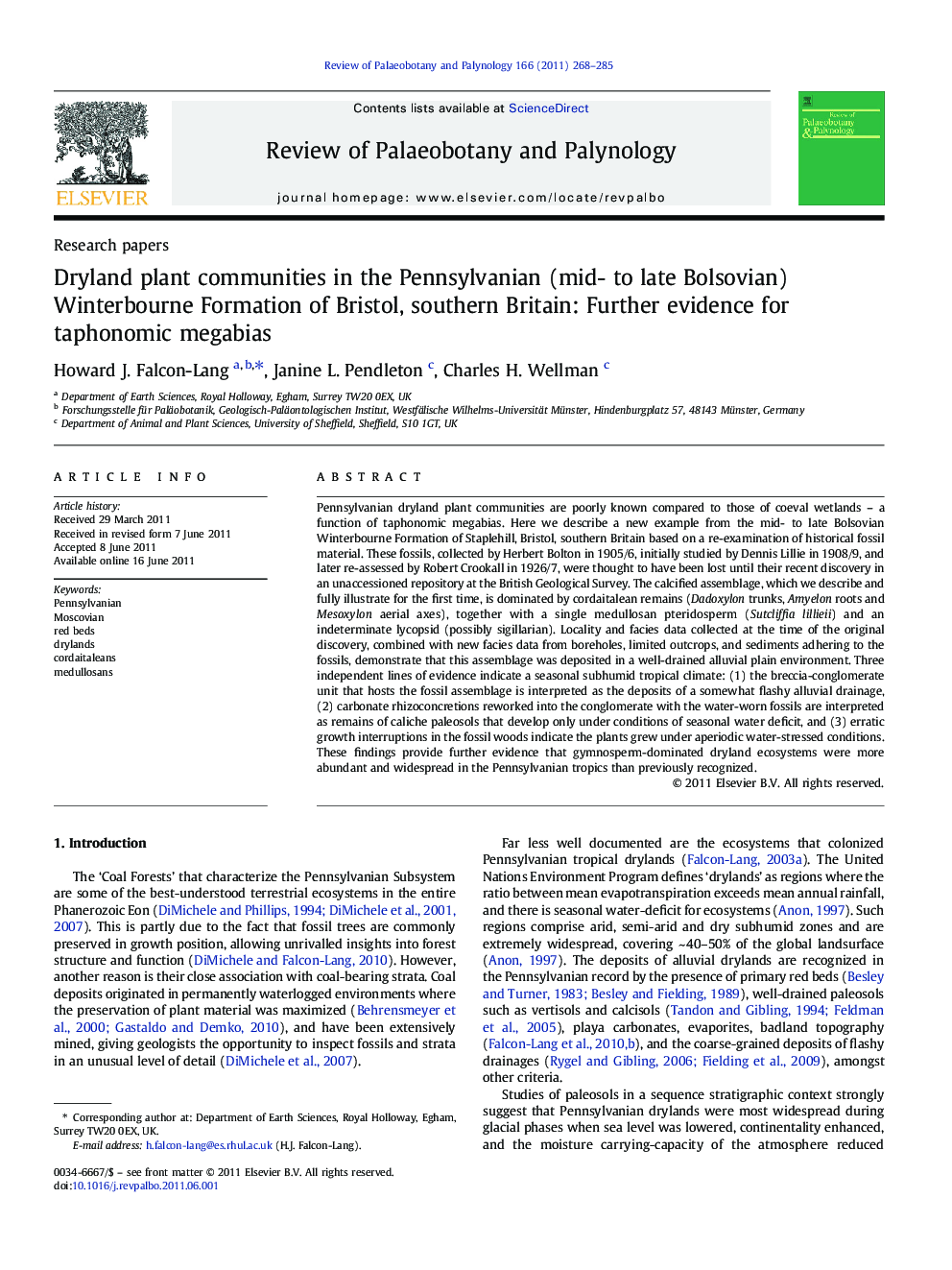| کد مقاله | کد نشریه | سال انتشار | مقاله انگلیسی | نسخه تمام متن |
|---|---|---|---|---|
| 4750531 | 1642532 | 2011 | 18 صفحه PDF | دانلود رایگان |

Pennsylvanian dryland plant communities are poorly known compared to those of coeval wetlands – a function of taphonomic megabias. Here we describe a new example from the mid- to late Bolsovian Winterbourne Formation of Staplehill, Bristol, southern Britain based on a re-examination of historical fossil material. These fossils, collected by Herbert Bolton in 1905/6, initially studied by Dennis Lillie in 1908/9, and later re-assessed by Robert Crookall in 1926/7, were thought to have been lost until their recent discovery in an unaccessioned repository at the British Geological Survey. The calcified assemblage, which we describe and fully illustrate for the first time, is dominated by cordaitalean remains (Dadoxylon trunks, Amyelon roots and Mesoxylon aerial axes), together with a single medullosan pteridosperm (Sutcliffia lillieii) and an indeterminate lycopsid (possibly sigillarian). Locality and facies data collected at the time of the original discovery, combined with new facies data from boreholes, limited outcrops, and sediments adhering to the fossils, demonstrate that this assemblage was deposited in a well-drained alluvial plain environment. Three independent lines of evidence indicate a seasonal subhumid tropical climate: (1) the breccia-conglomerate unit that hosts the fossil assemblage is interpreted as the deposits of a somewhat flashy alluvial drainage, (2) carbonate rhizoconcretions reworked into the conglomerate with the water-worn fossils are interpreted as remains of caliche paleosols that develop only under conditions of seasonal water deficit, and (3) erratic growth interruptions in the fossil woods indicate the plants grew under aperiodic water-stressed conditions. These findings provide further evidence that gymnosperm-dominated dryland ecosystems were more abundant and widespread in the Pennsylvanian tropics than previously recognized.
► We describe a Bolsovian dryland flora from Bristol, UK.
► The flora is dominated by cordaitaleans.
► Our paper shows that Pennsylvanian dryland floras are common.
Journal: Review of Palaeobotany and Palynology - Volume 166, Issues 3–4, August 2011, Pages 268–285